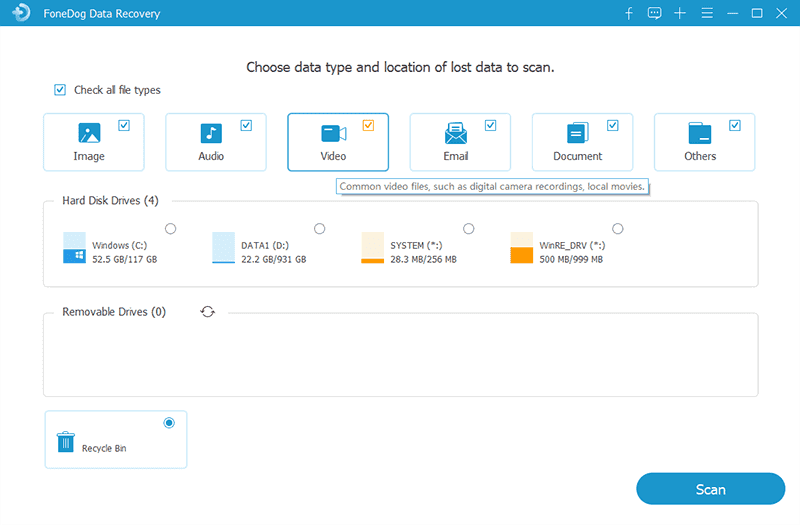

By Vernon Roderick, Last updated: January 31, 2020
Using File Explorer and managing our files has always been in our everyday life as a Windows user. One moment we’re searching on the browser, the next moment we’re checking our folders. In short, accessing folders is our very routine. However, sometimes things don’t end well for us. This is especially true when you encounter the access denied folder errors on Windows.
Most likely, you are going to be locked out of your precious folder. This means you won’t be seeing your files for a while, which in turn may end up bad on your side. It can either affect your studies, job, or whatever you may need the folder for.
Either way, it would be best to know how to solve the access denied folder errors on Windows as soon as possible, and that’s what we’ll be talking about today. Without further ado, let’s head to our first option.
Part 1. The Easiest Way to Bypass Access Denied Folder Errors on WindowsPart 2. 10 More Recommended Ways to Bypass Access Denied Folder Errors on WindowsPart 3. Conclusion
Although there are many ways to bypass the access denied folder errors on Windows, the easiest solution is by using third-party software to completely ignore the error. For that reason, we recommend the use of the FoneDog Data Recovery tool.
The FoneDog Data Recovery Tool allows you to safely recover all kinds of data, be it images, videos, documents, and more. In addition, the tool also supports its different formats. But what is most important is that the tool allows you to recover data from folders.
Data Recovery
Recover deleted image, document, audio and more files.
Get deleted data back from computer (including Recycle Bin) and hard drives.
Recover loss data caused by disk accident, operation system crushes and other reasons.
Free Download
Free Download

There are many things you can do with the FoneDog Data Recovery. You can even recover files that were deleted from the Recycle Bin. To fix the access denied folder errors on Windows, follow the steps below:
You will be taken to a window with a list of File Types and Drives.
The next window will take you to a selection of files.
Upon clicking the folder in question, you will get a list of files on the right side:
However, if the folder that you’re using the tool for has no problem whatsoever, then there’s no guarantee that the features would work. So to compensate, we’ll discuss more solutions to bypass the access denied folder errors on Windows.
Access denied folder errors on Windows typically show up when you don’t have the permission to access a directory. Although you can give yourself privileges, it would be easier if you take ownership of that directory at once.
This will allow you to open the folder, regardless of whether you really are its owner or not. So to fix the problem, all you have to do is assign the ownership of the folder into your account, and here’s how you can do it:
At this point, certain permissions should already be added on your account for that specific folder. However, in some cases, this won’t be enough.
Although taking ownership can give you permission to use the folder, it would still not guarantee that you’ll bypass the access denied folder errors on Windows. Simply put, if you want to be accurate, you will have to add the permissions manually yourself.
You should be able to do this if you follow these instructions:
With this, once you pinpoint the problem, you can easily solve it by choosing to grant the account-specific permissions.
Despite the importance of having permissions for a folder, there is also a chance that this would backfire and result to access denied folder errors on Windows. In short, if you add permissions recklessly, this will somehow cause you problems.
To fix the problem, Windows offers a way to reset your permissions easily, and you can do this by following these steps:
Permissions are only a tiny part of the access denied folder errors on Windows. Sometimes, what you need are privileges.
The Administrator of a system is often the one with the most privileges. With that said, you can assume that accessing folders would be a piece of cake for them. By using this account, you will have access anywhere without exceptions.
Alas, using the account can be very difficult. Fortunately, you can gain a part of the privileges by simply enabling the Administrator, and here’s how you can do this:
If the access denied folder errors on Windows still persist, then you might want to level up your game.
By level up your game, this means using more of the Administrator privileges. However, we still won’t head to completely setting yourself as the Administrator. All you had to do is add your account to the Administrator group, and here are the steps you need to follow:
Now if this is really not enough to solve the problem, you might want to head to maximize the potential of the Administrator.
The only way to completely use the privileges of the Administrator is by setting yourself as one. Although due to security measures, you won’t be able to access it easily. However, the steps are very simple as long as you satisfy the conditions:
With the Administrator account, you should have all the permissions and privileges you can wish for. However, in cases where this doesn’t work, then you can assume that privileges aren’t the problem. You would want to focus on Accessibility features and components instead.
One of the many features of Windows when it comes to accessibility is the User Account Control. As the name suggests, it disables certain user accounts to have limited control to directories. Although it can be a useful feature, it can sometimes lead to access denied folder errors on Windows. As such, our mission now is to disable this feature by following these instructions:
Now try accessing the folder again. If it still isn’t accessible, then the problem must be with the components of the file system.
If for some reason, the folder you want to access is a part of a shared network, then the problem might be because of improper configurations on the registry. So to solve the problem, you will have to make some changes in the registry:
With this, you’ll be able to do anything you want with the Registry Editor. Although this is the case, we are still not sure what changes are necessary. Regardless, you need to be cautious when handling the registry as it may cause certain errors.
Another component of the file system is environment variables. Like in the case of the registry, if the environment variables are not properly set, then the access denied folder errors on Windows would continue to exist. This, with all the solutions we discussed, should be enough to solve the problem. But if not, then there would only be one explanation left.
Sure, anti-virus software is rather important for the security and safety of your device. However, some software can have some useless features at times. One such feature is the blocking of various features on your Windows.
For one, it can block the installation of applications since they assume that it may cause some severe problems. Thus, you will have to disable your security software temporarily. Unfortunately, you would have to look up the instructions for this yourself since there are different ways to disable different anti-virus software. Regardless, once you’re done with this, there shouldn’t be any messages that will pop up telling you about access denied folder errors on Windows.
Many people tend to think that access denied folder errors on Windows will cease to exist eventually if they continue to ignore it. However, it won’t be that simple, otherwise, life would be much easier for Windows users.
There will always be a complicated set of instructions that would be the only way to solve the problem. Fortunately, you’ve read almost all of them in this article. Regardless, you should still remain careful when following these solutions as it may lead to further problems if used incorrectly.
Leave a Comment
Comment
Data Recovery
FoneDog Data Recovery recovers the deleted photos, videos, audios, emails, and more from your Windows, Mac, hard drive, memory card, flash drive, etc.
Free Download Free DownloadHot Articles
/
INTERESTINGDULL
/
SIMPLEDIFFICULT
Thank you! Here' re your choices:
Excellent
Rating: 4.7 / 5 (based on 96 ratings)